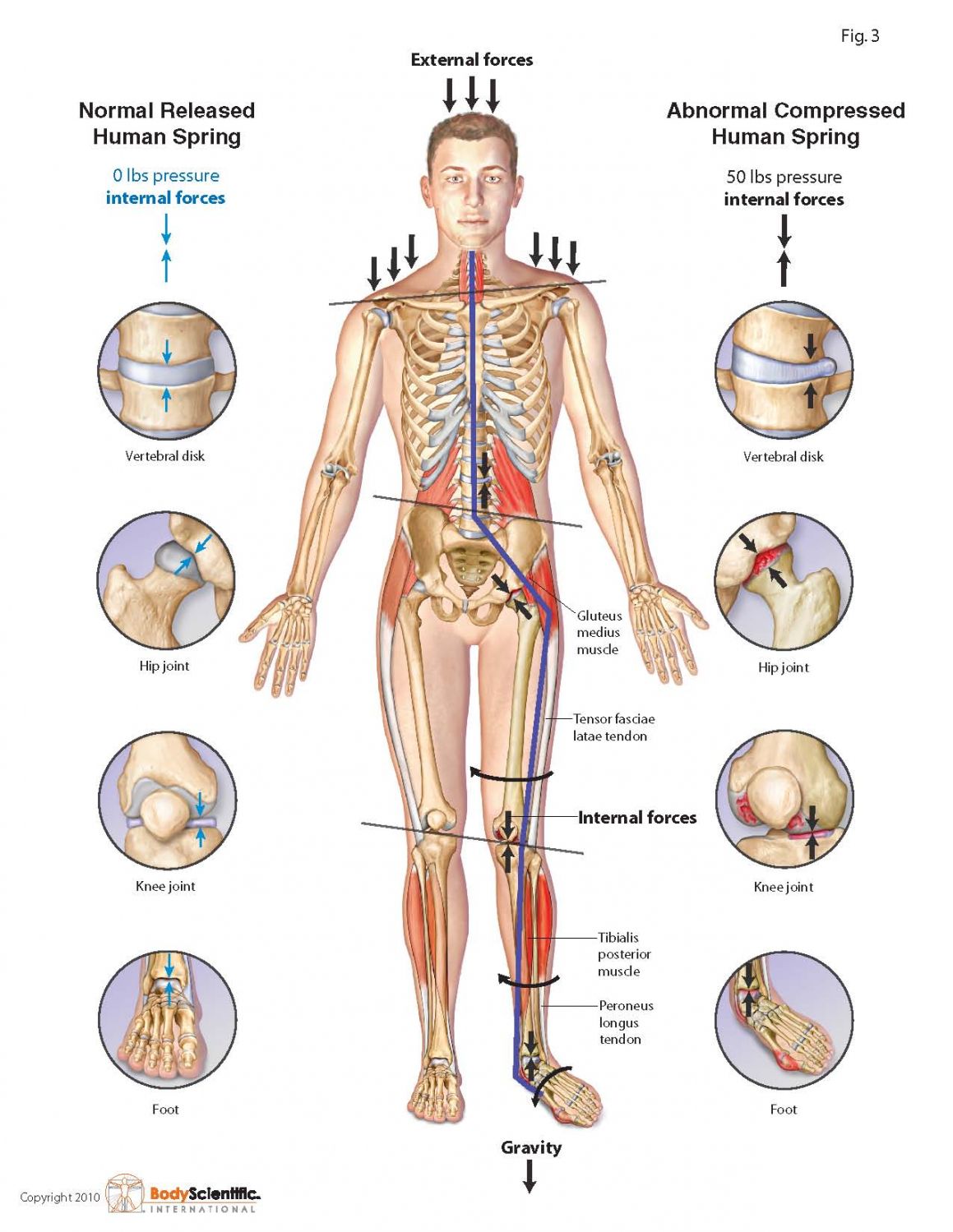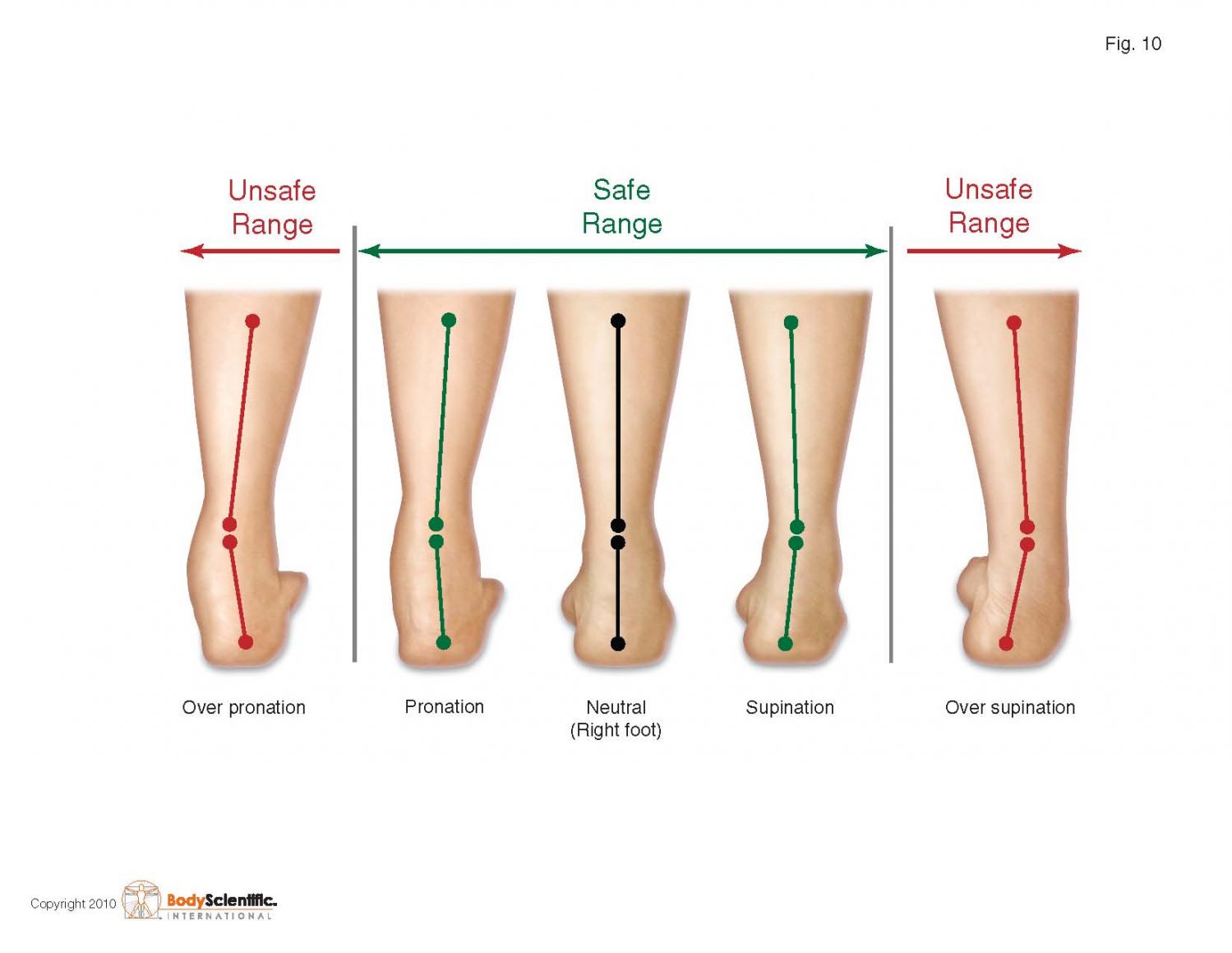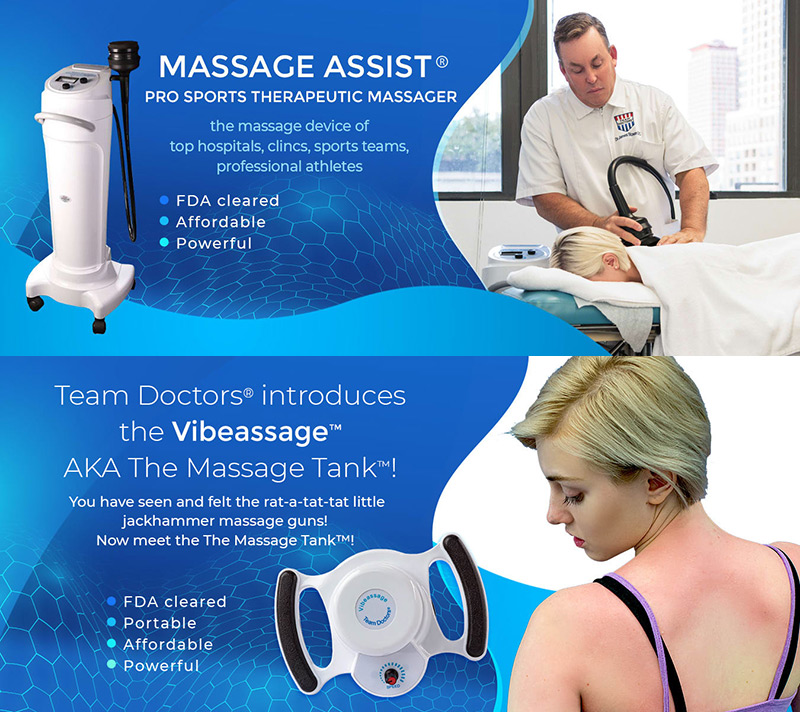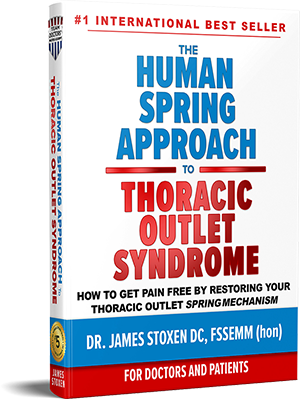We can learn a great deal from studying what athletes do to have optimum performance to improve our performance and prevent injury in our lives. I have learned that plyometric training is one way to develop maximum jumping capacity and to strengthen the Human Spring.
It may sound like the latest action film, but controlled impact and maximum power are the aims of a training technique called plyometrics. Yuri Verkhoshansky is the founder of modern human spring training, called plyometrics. Also known as jump training, plyometrics involves stretching the muscles prior to contracting them. This type of training, when used safely and effectively, strengthens muscles, increases vertical jump and decreases impact forces on the joints.
Plyometric drills or plyometric exercises, consist of fast, powerful movements performed in rapid sequence. The intent of plyometric training was (and still is) to develop the elastic recoil within the body (the human spring mechanism) by employing high impact training drills that enhance the effects of traditional resistance exercises. The result is improved sports performance. If you happened to have been following international sporting events in the eighties and nineties, you probably recall that the Russians dominated the world in most strength and speed sports.
In those days, plyometric workouts were new on the sports training scene, or at least new to the world outside the Soviet Union. When it was introduced in the United States in 1975, there was some controversy in regard of its safety. We made mistakes and people got hurt because American trainers and coaches didn’t fully understand this new form of training.
Fortunately, after years of research and further study, plyometric training has made its way into every university, college, and top professional teams — touted by top professors, trainers, and athletes as the most advanced training approach ever developed. Today, it is a popular and safe method of strength training for athletes, non-athletes, and even children.
Developing A Strong Human Spring Is The Key To Developing Maximum Jump Capacity. Example: Javier Sotomeyer
This is a video of Javier Sotomeyer ,an athlete from Cuba who broke the world record in the high jump at over 8 feet.
This is a man that ran about 15 steps and jumped 8 feet over a bar.
You can see how he is using his body like a spring mechanism jumping higher than his height.
He is using his body like a spring mechanism because it is a spring mechanism.
That’s what I call the human spring.
Human spring is very interesting because athletes develop human spring to be able to perform these amazing feats of athleticism.
Unfortunately so many people don’t understand how athletes develop this maximum human spring and the importance of human spring and anti-aging or preservation of joint integrity. It happens with controlled impact training and applied plyometrics.
Jumping Ability
This is the ability to get maximum spring force from the body to elevate you body over an obstacle.
When exercise scientists study jumping the number one training approach that comes to mind is plyometrics.
Plyometrics
Plyometrics (also known as “plyos”) is a type of exercise training designed to produce fast, powerful movements, and improve the functions of the nervous system, generally for the purpose of improving performance in sports.
Plyometric exercises may also be referred to as explosive exercises.
If we look at the human body as a lever system, as what is currently accepted, it’s difficult to explain how we get the power to lift a 200-pound man 8 feet over a bar.
It may be impossible for a lever to elevate a 200 pound man over an 8 foot bar.
Its not impossible to explain how to elevate a 200 pound man over an 8 foot bar as a spring mechanism with spring engineering.
If we look at the human body as a human spring then what I suggest is easy to apply the physics of spring mechanics to the human body to explain and understand and more effectively design a jumping form technique and training program to achieve maximum jump performance.
Is the body ever a lever mechanism?
The body is a lever mechanism when the spring mechanism breaks down.
That is when your doctor sees you, when your spring mechanism is broken down or if he or she is a pediatrician evaluating babies and kids or if he is involved in performance enhancement medicine vs treatment of injuries or conditions.
Think for a moment of this example:
“Your car can drive down the road with inflated tires but it can still roll on the rims when the tires deflate. We would all opt for driving our car on tires that were optimally inflated but the fact remains we could still get down the road if we had to on the rims.”
There is an optimum spring elastic system that top athletes and coaches study so they can train these tissues for optimum spring speed, quickness, efficiency and protection from injuries.
When that mechanism breaks down the athlete doesn’t spring the body mass off the human spring, what is left is the lever system which is less efficient and and not as effective at protecting you completely from the impacts of millions of collisions of the steps you take in a lifetime.
We should all have our mechanics evaluated for maximum human spring vs lever mechanics. That is what I look for in the gait evaluation.
We can learn a great deal from studying what athletes do to have optimum performance to improve our performance in every day activities.
The Law Of Human Spring – Hooke’s Law
Hooke’s law of elasticity is an approximation that states that the extension of a spring is in direct proportion with the load applied to it. Many materials obey this law as long as the load does not exceed the material’s elastic limit.
Hooke’s law is named after the 17th century British physicist Robert Hooke. He first stated this law in 1660.
Hooke’s law of elasticity discovered by the English scientist, Robert Hooke in 1660, which states that, for relatively small deformations of an object, the displacement or size of the deformation is directly proportional to the deforming force or load. Under these conditions the object returns to its original shape and size upon removal of the load. Elastic behavior of solids according to Hooke’s law can be explained by the fact that small displacements of their constituent molecules atoms, or ions from normal positions is also proportional to the force that causes the displacement. Encyclopedia Britanica reference
What it says is that the more force we can load into the human spring called spring displacement of the more counteracted or the full force will spring back called direct storage of force.
We use the same laws of physics for materials as we do for the human body.
The reason is simple:
The body exists in the universe and the universe has laws which govern how it acts and reacts to gravity.
Since the human body is an object that has approximately 270,000,000 collisions with the earth in a lifetime there has to be an explanation for why after this many 1,000,000 collisions it has not become destroyed let alone 270,000,000.
It must have some sort of spring or shock absorbing device protecting it because it is demonstrated that even if we do have shoes to protect us we still have the 270,000,000 collisions.
The more we can depress the human spring depends on the total capacity this spring has to be below the force and without causing physical damage.
This is called the yield.
The yield is the maximum force that can be loaded into a structure without causing permanent damage.
When any material or in this instance human tissue or human spring deforms its physical shape during loading of the force of the landing of the human body as in when you’re planting the foot jump is called elastic deformity.
Elastic deformity
Elastic deformity as applied to the human being as an object means that the structure or human spring or spring deforms its physical shape, stores energy within the deformation process and then returns itself back to its exact original shape releasing the energy back into the structure.
What can cause reduced performance in jumping is any internal (muscle spasms or joint locking) or external restriction (binding devices like shoes) on the human spring its ability to maximally elastically deform the body to allow the maximum force of the impact into the spring to load it with energy.
So, if you cannot get it to elastically deform enough to load the entire force of the impact some forces will be absorbed into the tissues like the joints, muscles ligaments and even bones as stress and strain.
Impacts are required for life.
We cannot lay around all day and night.
Its not the impacts that cause damage to our body.
It is the inability to absorb the impacts that cause damage to our bodies. Better yet the inability to spring back from the impacts.
So should doctors be telling you not to take up impacts by putting cushion shoes, use an orthotic, or do the elliptical and don’t run.
Walking causes impacts. Are they going to tell you not to walk too?
Why don’t they just implement a plan to restore the impact resistance mechanism of your body or what I call the human spring?
If they can develop a training program to launch a 200 pound man over an 8 foot bar can’t they use the same training and restoration approach to restore your human spring to walk and even run with better resistance to impacts?
You would think that is important!
What causes the resistance to absorption of impacts?
I call this a weak, stiff or locked human spring.
Here are some examples of where this resistance can get in the way of the maximum loading of this displaced forces.
This is what I have observed in my 25 years of clinical experience as well as what is predictable based on the acceptable principles of strength and conditioning:
We can state this without a doubt: Footwear effects the loading of the forces into the human body on impacts.
These are the questions that need to be answered:
- Does footwear increase or decrease the maximum potential loading forces into the human spring?
- Does footwear alter the angles or vectors of the forces loading into the body?
It has been my opinion for 10 years that footwear changes the loading of forces and absolutely changes the angles or vectors of the loading forces into the body.
If the loading is not ideal into the natural foot, the brain senses an abnormal movement pattern or loading of the forces it responds with tonic protective spasms.
Spasms have the potential to lock the human spring because they bring the origin and insertion together and this commonly means two bones move closer together. When muscles on both sides of a joint contract at the same time for a sustained period of time this causes compression of the joint.
That certainly won’t help you load more energy into the spring. It certainly won’t help you improve the springs ability to protect you from impacts nor will it allow you to recycle more energy into the spring.
So is it a good idea for jumpers to have their entire bodies checked for abnormal protective spasms that could effect their jumping ability and ability to land safely?
Of course! Only if you want to win or reduce the risk of injury. hmmm
Where can the human spring local?
A locking can happen in any of the 33 joints of the human foot due to muscle spasms or a locking up the joint play in any of these joints.
Who is qualified to check those joints for locking?
Find that doctor!
A locking can happen in any of the 7 floors of the human spring.
Who is qualified to check those joints for locking?
Find that doctor!
A stiffening of the muscles surrounding the spring mechanism such as in the loading muscles, primarily in the intrinsic muscles of the first second and third metatarsal cunieform joint areas that could be locked or there could be spasms in the muscles and more commonly both, to the tensor fascia latae or TFL and primarily the gluteus medias secondary muscles that spasm to abnormal movement or mechanics are the abductors.
People talk about the Achilles tendon sometimes being stiff.
Most people approach this by stretching it. It’s not always that simple and frankly I have not seen that approach to be too effective.
In fact I have found clinically the stretching of the achilles is not what will reduce the strain on the achilles.
This is why…
I see the Achilles strained when the muscles that work with the Achilles tendon don’t do their job to absorb the force of the impact.
I call these the landing muscles which are the tibialis anterior and posterior, and peroneals.
What I find that is causing the strain on the Achilles is the weakness in these muscles causes a shift in the load from the force of the landings on the Achilles because it’s the only muscle that’s actually working.
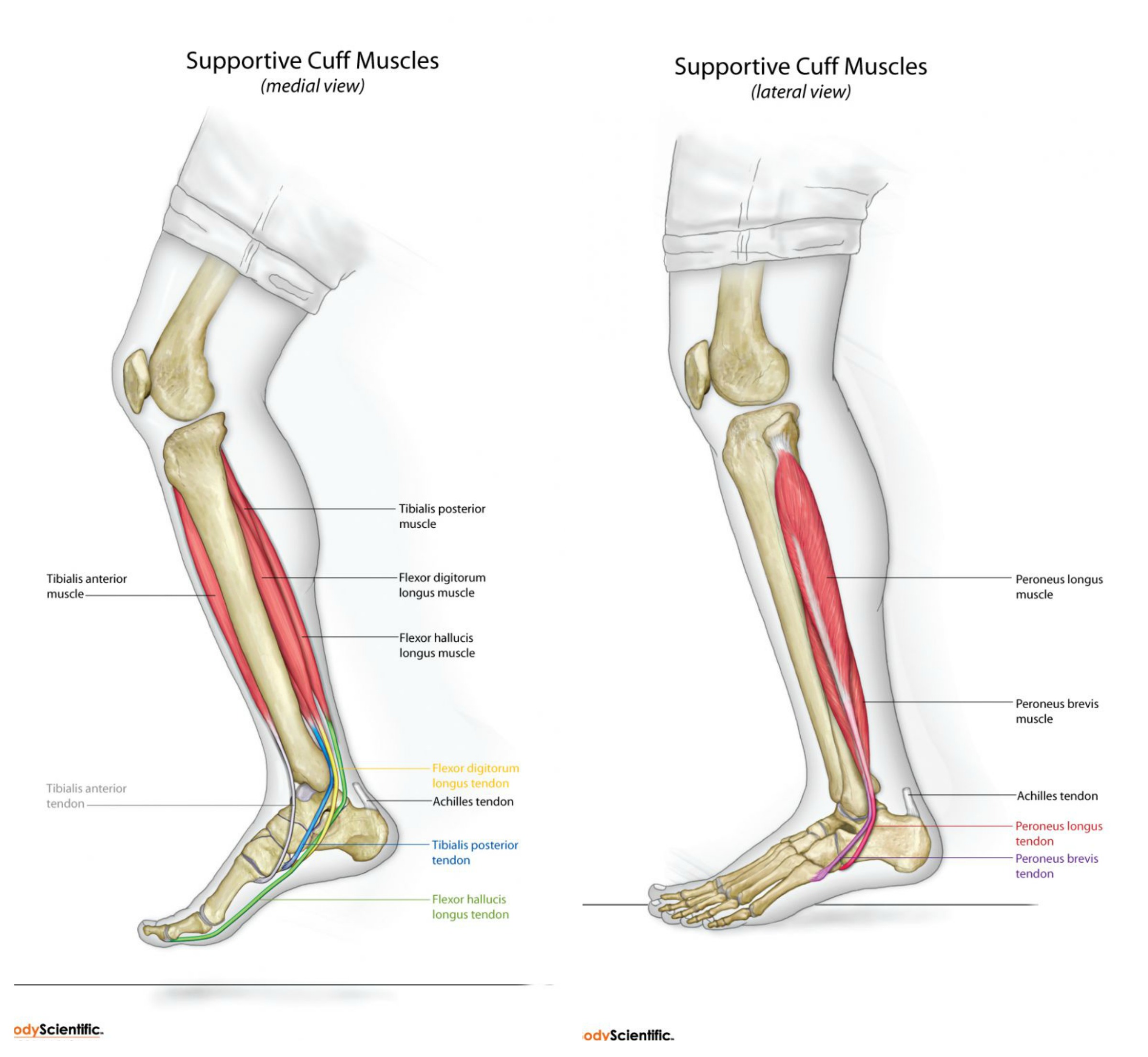
Pronator Supinator Cuff AKA Arch Sling, Arch Spring Cuff; The Spring Cuff Or The Spring Suspension System
The locking of the foot usually occurs at the first and second metatarsal cuneiform joints the medial will ankle mortis and the medial sub tailor joint.
Due to a stiffening or a spastic muscle pattern starting from the foot to the head this translates into a locking of the spinal spring mechanism.
What is interesting is this…
If you have stiffness and weakness in the left lower extremity causing abnormal movement that leads to stress and strain, wear and tear and inflammation the more impacts and abnormal movements the more the build up of inflammation until it crosses the threshold to create the pain signal in the brain leading to the feeling of pain.
If it takes 1,000,000 abnormal impacts and movement patterns with stress and strain and your left lower extremity takes 500,000 impacts and abnormal movements your right lower extremity takes 500,000 impacts and abnormal movements, it will take twice as long for the lower extremities to feel pain before the lower back which feels the brunt of the abnormal movements of both lower extremities.
As abnormal mechanics are left chronic or with additional impacts or forces on each extremity the levels of inflammation rise above the level which the brain can detect these levels of inflammation or the concentration levels are high enough for the nervous system to pick up on the abnormal levels of inflammation in the tissue and then you start to develop these painful conditions in the lower extremities.
To improve to evaluation of the capability of the human spring to take impacts is:
1. Evaluation of gait or human walking technique to determine if the body mass springs off the ground or bangs into the ground, and to check loading capacity.
2. Look to see if there are any abnormal movement patterns in the landing of the foot with the second toe as the axis pointing toe.
If the foot is stiff it cannot spring the mass through the foot straight. It rolls the mass around the locked foot in the path of least resistance.
This is concept is called over pronation and over supination.
This is a concept that doctors will debate all day long till death because they don’t all understand the importance of joint spring or joint play and what that has in the impact resistance mechanism of the foot.
It is not the position of the bones of the foot the is important, called over pronation.
It is what muscles are weak to allow the bone to get into that position.
When you understand what muscles weaken to allow the bone to drift out of the safe range you can better understand how to restore the movement of the foot within the safe range so that walking and running is more efficient, impact resistant.
3. Do a physical examination on the table to look for muscle spasms both painful and silently inflamed.
You have to look in the patterns I discussed earlier from toe to head based upon the patterns of abnormal movements detected on the gait evaluation.
This is done with the tissue palpation not randomly but based upon the pattern of painful spasms that would be developed according to the way the body is adjusting the mass over the spring or the movement that is developed abnormally when it is compensating for the lack of an intact spring mechanism.
We can learn so much from studying sports performance and elite level training to apply to our every day life.
Dont let anyone ever tell you you cannot do something. Find someone to help you get to where you want to be and make it happen together.
This video tutorial was taken from the lecture:
Run For Life! Barefoot
Presented by Dr James Stoxen DC
The 8th Annual Malaysian Conference And Exhibition On Anti-Aging, Aesthetic And Regenerative Medicine
Kuala Lumpur, Malaysia
April 30 — May 2, 2011
Like this article? We will send the next one to you.
Register for our updates below:
Disclaimer
All content on teamdoctorsblog.com, including without limitation text, graphics, images, advertisements, videos, and links (“Content”) are for informational purposes only. The Content is not intended to be a substitute for professional medical treatment, advice, or diagnosis. Please remember to always seek the advice of a qualified physician or health professional with any questions you may have regarding any medical concerns. Dr James Stoxen DC and Team Doctors does not recommend or endorse any specific treatments, physicians, products, opinions, research, tests, or other information it mentions. Said Content is also not intended to be a substitute for professional legal or financial advice. Reliance on any information provided by Team Doctors is solely at your own risk.



